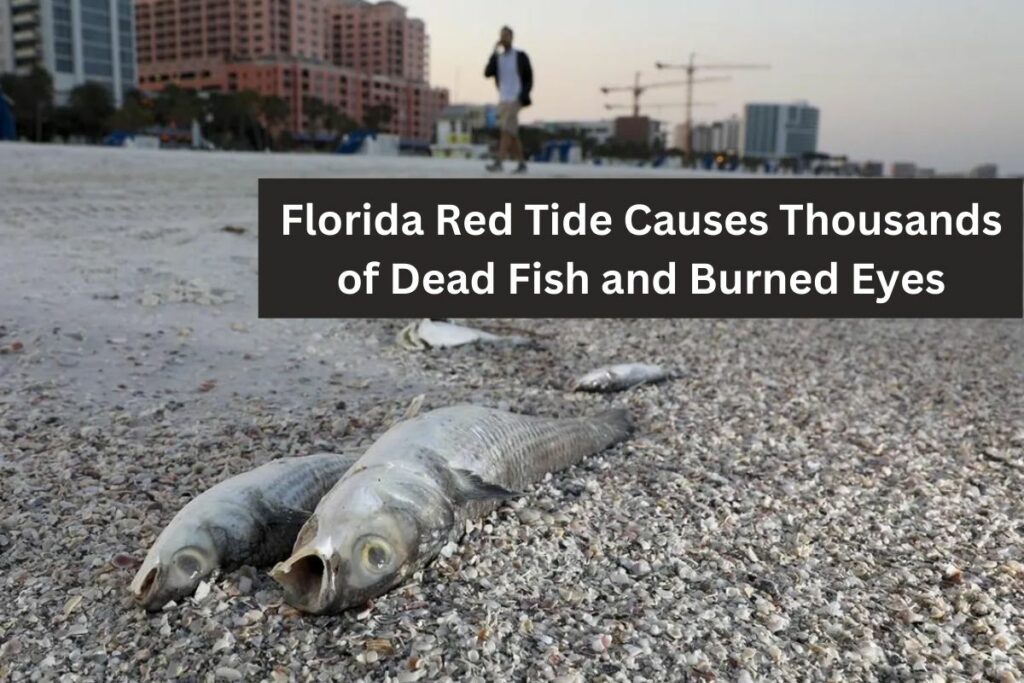Residents of Florida’s southwest coast are complaining of burning eyes and skin as thousands of dead fish wash up on the famed beaches of the Sunshine State due to an outbreak of deadly red tide algae. According to county spokesperson Tony Fabrizio, about two tonnes of garbage, primarily dead fish, were removed from Pinellas County beaches and taken to the dump.
Mandy Edmunds, a park supervisor for the city, told the newspaper that since the beginning of the month, almost 1,000 pounds (454 kilograms) of fish had been removed from beaches in St. Pete Beach. The natural occurrence of red tide, a harmful algal bloom in the Gulf of Mexico, is made worse by the presence of fertilizers like nitrogen in the water.
Due to the risk of skin irritation, rashes, burning, and sore eyes, the Florida Fish and Wildlife Conservation Commission (FWC) advises against swimming in or near red tide waters. Those with asthma or lung conditions should avoid beaches containing harmful algae.
The FWC stated on Friday that it had discovered red tide in 158 samples taken from the Florida Gulf Coast, with Pinellas and Sarasota counties having the highest amounts. “79 representatives from Southwest Florida included bloom concentrations (>100,000 cells/liter):
You can also check the latest news down below:
- Covid News: The New York Mask Law Remains in Place After a Judge Issues a Stay
- Kanye West Documentary Jeen Yuhs Latest News
Twenty-six are from Pinellas County and offshore, eight from Manatee County, 27 from Sarasota County, five from Charlotte County, four from Lee County, eight from Collier County, and one from Monroe County. To track this patchy occurrence, we continue to employ satellite imagery (USF and NOAA NCCOS) “supplied by the FWC.
The most recent sample map shows at least eleven Pinellas County locales with red-level concentrations, more than 1,000,000 cells per liter, including Indian Rocks Beach. High amounts can result in fish deaths, cloudy water, and human respiratory issues. Many vacationers are unsure how red tide will affect their Florida vacation as spring break draws near.
Here, they can get the most recent red tide reports from the Florida Department of Fish and Wildlife. With assistance from the city and the Pinellas County Health Department, a homeowners’ organization in Indian Rocks Beach, Florida, which annually sponsored BeachFest, they decided that red tide would likely persist into the middle of the following month when the festival was scheduled.
You can also check the latest news down below:
- Here’s Why Steven Bauer’s Girlfriend Is Talk Of The Town
- Weak Hero Chapter 230 Spoiler: Suggest a Triumph Against Adversity!
The Indian Rocks Beach Homeowners Association wrote, “Red Tide is currently on the beach and is anticipated to linger in the area in the coming weeks. Although regrettably, it had to be canceled, it was the right move for the public’s health.
Follow us on google news for the latest updates.
